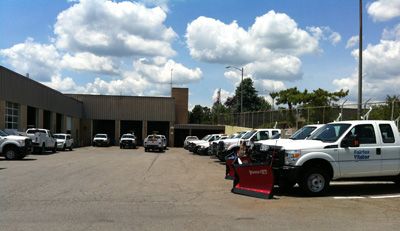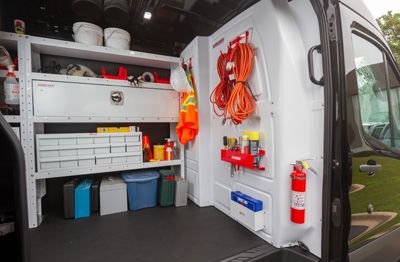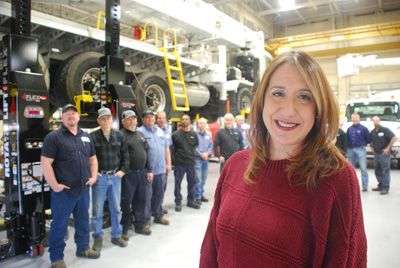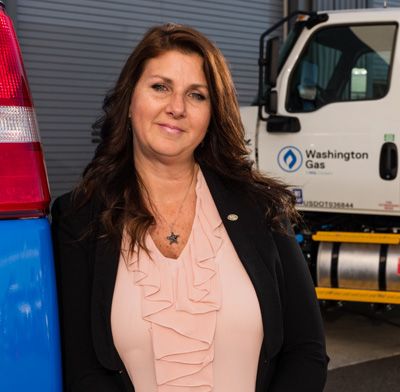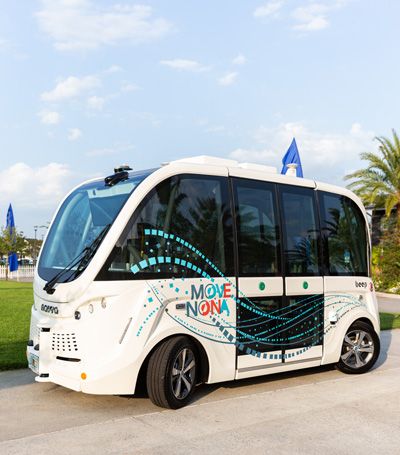Shop Talk: Developing Your Continuity of Operations Plan in a COVID-19 World
If you were to lose one-third of your workforce in the fleet department at any given time due to COVID-19, what would your continuity of operations plan look like? What adjustments would you make?
Dale Collins, fleet services supervisor at Fairfax Water, which serves nearly 2 million customers in Northern Virginia, began posing these “wargaming” questions with his team in early March when it became clear that the pandemic presented a significant health risk to employees, especially the shop technicians who needed to be on-site to help keep the fleet running.
So, what changes have Collins and his team made as part of the water utility’s continuity of operations plan to ensure employee safety while maintaining high service levels for customers?
UFP recently spoke with Collins, who oversees 434 total fleet assets and two garages – in Chantilly and Newington, Virginia – with seven total shop employees, to learn more about the utility’s COVID-19 response. Here is an edited transcript of our conversation.
UFP: How did Fairfax Water arrive at the COVID-19 protocol you have developed?
Dale Collins: It was early March when we, as a fleet organization, really became attuned to focusing on the things that we needed to start doing. We became more situationally aware. And our executive leadership really helped us to get in front of this quickly.
In what ways did senior leadership help drive the process?
They helped the entire organization to think about and develop scenarios; I call it wargaming. If we were to lose one-third of all of our workforce, what would our continuity of operations look like?
And they pressed that thinking process down to the managers, directors and on down to the supervisors at the ground level to help draw out the best ideas. And it all went back up the chain [of command], which made it much easier to wrap our heads around what things would look like if we couldn’t operate as usual.
So, what are some of the changes you’ve put in place for fleet?
We started by building greater awareness with our end users. We highlighted the need for them to be very disciplined in doing their pre-operational checks, making sure that they check everything before they get in the vehicle to go to the job site. That’s because, if we were to lose a significant number of our technicians on the shop floor, our ability to respond to road calls would be compromised.
I also asked them to please be diligent on curtailing any type of self-inflicted wounds or any damage – to make sure that when you’re loading your vehicles with the equipment that you take a little extra room, don’t bump the side of the truck bed, and so forth.
I have to say that our field people have really responded well to that. We don’t have to do a lot of damage repair right now. And that has helped a whole bunch right there.
What else did you include in your continuity of operations plan?
For example, if we lost technicians, I would split my role from being a supervisor position to helping on the shop floor or anywhere we needed support. The same would go for the supervisors on my team. Instead of being heavily administrative, they would be more focused on doing hands-on, nut-and-bolt work.
Our other adjustments would be that we would push off our preventative services to address any urgent corrective needs, at least initially. And then we would go back to doing our PM work. But obviously, vehicle uptime is paramount. So, even if you’re a little late on your service, we find ourselves pretty well prepared to weather a storm like this because we have a relatively young fleet. And the age of the fleet helps a lot in terms of minimizing the strain on our shops to repair older vehicles.
What about your shop operations? What has changed? What best practices have you implemented in response to COVID-19?
Before we get a vehicle in – if it’s a scheduled service or a corrective repair – we wash up and glove up. We spray disinfectant on the seats, wipe down the steering wheel, the door panels. We put in a floor mat and a plastic disposable seat cover. We then bring it in the shop, execute our work, take the vehicle out of the shop, remove our PPE, take off our gloves and then wash immediately after. Each time. Every time. No exceptions.
What type of PPE are your techs using besides gloves?
For one, the plastic seat covers. They work great because you don’t have to worry about contaminating the clothes you’ve got on your body. Also, the floor mats because there’s a significant amount of data about how viruses can live on shoes and spread.
What other best practices have you implemented?
Our nighttime cleaning crew has continued the winter protocol that they typically follow during the heavy influenza season, which includes increased wiping down of surfaces, door handles and other common high-touch areas. When we arrive in the morning, we spray down our door handles and prop the doors open so we’re not constantly touching them. We’ll spray down the water fountain and wipe it down with disinfectant. We’re providing hand sanitizer in the mobile crew trucks for the field staff when they can’t have running water and soap. And we make sure to maintain as much space as possible between each of our staff members.
Also, we do a roll call every morning at both shops to make sure everyone is in good health and feels well, and that their families are staying healthy. We’ve asked every staff member that if they feel ill, if they’re running any type of temperature, to stay home.
With us being an essential service, we really try to make sure we take care of ourselves so we can take care of our customers.


